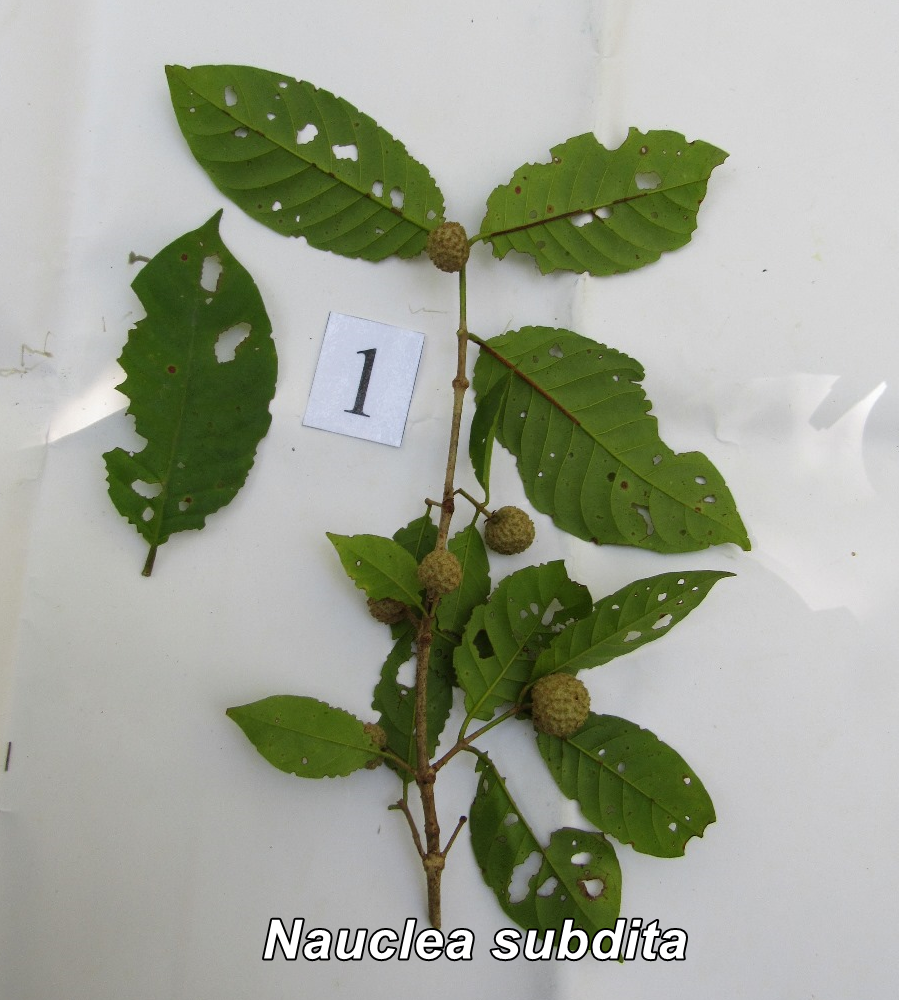Nauclea subdita
(Korth.) Steud.
Rubiaceae
Nama : Menagit.
Deskripsi : Pohon, berukuran kecil sampai sedang, atau perdu, tinggi dapat mencapai 20 m. Kulit batang halus, coklat keabu-abuan, sedikit beralur kadang bersisik. Daun penumpu ada. Daun tunggal, mengertas, berhadapan; membundar telur sampai melanset, melonjong, pangkal daun menumpul sampai membundar, atau membaji; ujung daun meruncing sampai lancip, hijau keuningan terang pada daun muda; kehijauan sampai tepi daun mengutuh; pertulangan daun menyirip, 7-10 pasang. Perbungaan bonggol, banyak kuntum bunga. Bunga mengelompok pada bonggol; daun kelopak kecil, kadang tidak jelas, daun mahkota kuning sampai jingga. Buah semu berbentuk bonggol, hijau sampai kecoklatan atau jingga kekuningan, coklat hingga hitam kecoklatan saat tua; buah sejati berukuran kecil. Biji kecil.
Ekologi : Persebaran alami dari daerah Filipina India, Semenanjung Malaysia, dan Indonesia (Sumatra, Java, Kalimantan, Sunda Kecil, Sulawesi). Pada umumnya tumbuh pada hutan dataran rendah seperti hutan riparian dan hutan rawa (rawa-gambut). Jenis ini banyak dijumpai di tepi sungai dan rawa-rawa.
Kegunaan : Kayu dimanfaatkan sebagai bahan baku bangunan tradisional. Referensi: Muklis et al., 2018.

